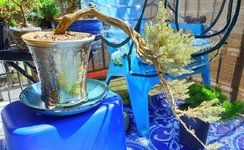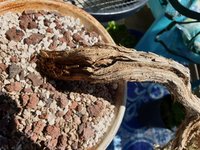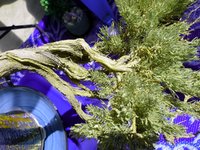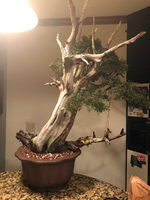Bonsaimancer
Seed
- Messages
- 3
- Reaction score
- 0
Hello,
Long time lurker on this wonderful forum, but 1st question. I am the type of person who does copious online research and searches previous threads before ever asking questions, but I cannot answer this: does a tree with a completely deadwood trunk & limbs grow larger? I ask because I collected this yamadori from an area where all the trees--some big and some small--look like the pictures. thousands and thousands of these trees on a cliff with brutal winds--trees all smashed flat to the ground by the wind, ash (from fires) in the soil, but all living with green needles. This was in Eastern Washington near the Gorge area. Also, does anybody know what species this might be? Thank you in advance!
--Richard
Long time lurker on this wonderful forum, but 1st question. I am the type of person who does copious online research and searches previous threads before ever asking questions, but I cannot answer this: does a tree with a completely deadwood trunk & limbs grow larger? I ask because I collected this yamadori from an area where all the trees--some big and some small--look like the pictures. thousands and thousands of these trees on a cliff with brutal winds--trees all smashed flat to the ground by the wind, ash (from fires) in the soil, but all living with green needles. This was in Eastern Washington near the Gorge area. Also, does anybody know what species this might be? Thank you in advance!
--Richard








